|
 Srilankan University students’ unions have voiced concerns over the government’s move to introduce a compulsory ‘leadership training programme’ under the military to all new entrants from 2011. The Inter University Students’ Federation (IUSF) says there were doubts over the government’s move, as military leadership skills could not be applied to civil society. Srilankan University students’ unions have voiced concerns over the government’s move to introduce a compulsory ‘leadership training programme’ under the military to all new entrants from 2011. The Inter University Students’ Federation (IUSF) says there were doubts over the government’s move, as military leadership skills could not be applied to civil society.
IUSF Convener, Sanjeewa Bandara told The Sunday Leader newspaper that university students had doubts as to why the government has suddenly decided to give leadership and disciplinary training to students at military establishments.
“We all know the crimes committed by army deserters and had they adhered to a strict disciplinary code, they would never commit the offences they have been accused of, which include robbery, murder and rape,” he said, adding that it was hilarious to see students being given disciplinary training by such an institution.
According to Bandara, students who were earlier sent to university are now being sent to military camps.
Bandara made these comments in response to a statement made by Higher Education Ministry Secretary Dr. Sunil Jayaratne that students who qualify for university education would have to undergo leadership training at a military establishment. Read more in Sunday Leader 24 April 2011. 
 India’s 2011 budget hikes spending on higher education with 24% compared to last year to US$2.9 billion for 2011-12. The new budget was presented by Finance Minister Pranab Mukherjee on 28 February 2011. Most of the increased allocation is for projects already in the pipeline rather than for ambitious plans to expand the number of higher education institutions in the coming years. A major portion of the money for higher education will go to the 15 Indian Institutes of Technology (IITs), which will receive $1.25 billion, followed by the University Grants Commission, the regulatory body for higher education, which will receive $1.16 billion. India’s 2011 budget hikes spending on higher education with 24% compared to last year to US$2.9 billion for 2011-12. The new budget was presented by Finance Minister Pranab Mukherjee on 28 February 2011. Most of the increased allocation is for projects already in the pipeline rather than for ambitious plans to expand the number of higher education institutions in the coming years. A major portion of the money for higher education will go to the 15 Indian Institutes of Technology (IITs), which will receive $1.25 billion, followed by the University Grants Commission, the regulatory body for higher education, which will receive $1.16 billion.
However, the increase falls short of the nearly 100% hike in higher education funding that the Education Ministry was pushing for to meet a slew of promises made under the country's 2007-12 Five Year Plan. India's National Knowledge Commission has e g estimated that India needs 1,500 universities compared to around 370 now.
More information on the Indian 2011 education budget, in an article by Alya Mishra, World University News 13 March 2011. 
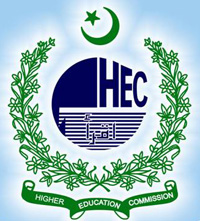 Four new regional higher education networks are to be set up in Central and South Asia. That is a result of a Regional Policy Dialogue conference jointly organised by Pakistan’s Higher Education Commission (HEC) and the British Council, in Islamabad 23–25 November 2010. Common academic programmes, credit transfers, student and faculty exchanges, and affiliations with universities of other countries would be explored as part of the networks. A Joint Regional Research Fund was also announced with possible seed funding from the British Council and other commitments to be worked out in the coming months. Four new regional higher education networks are to be set up in Central and South Asia. That is a result of a Regional Policy Dialogue conference jointly organised by Pakistan’s Higher Education Commission (HEC) and the British Council, in Islamabad 23–25 November 2010. Common academic programmes, credit transfers, student and faculty exchanges, and affiliations with universities of other countries would be explored as part of the networks. A Joint Regional Research Fund was also announced with possible seed funding from the British Council and other commitments to be worked out in the coming months.
Leaders from 50 universities representing eight countries at the meeting included vice-chancellors and rectors from universities in five South Asian countries – Pakistan, Afghanistan, Bangladesh, Nepal, and Sri Lanka, plus Malaysia, Turkey, Egypt, Iran, Kazakhstan, Uzbekistan and the UK.
The four cross-region networks announced during the conference include the Partner Network for Collaboration in Knowledge Transfer, the Leadership and Training Collaboration Network, an Incubation Hubs Network of Universities and a Higher Education Policy Dialogue Network.
The learning from this event and similar policy dialogues in 2010 will be taken forward to the next Going Global Conference to be held in Hong Kong April 2011. More information in an article by Ameen Amjad Khan for the University World News. 
 Decades after India sought foreign assistance to establish its first premier technical institutes - the Indian Institutes of Technology or IITs – it is again seeking guidance from the world's top institutions to set up 14 innovation universities.The government wants mentors from leading universities in the US and UK. They include the Massachusetts Institute of Technology, Harvard, Yale and George Washington universities, and Imperial College, London. Decades after India sought foreign assistance to establish its first premier technical institutes - the Indian Institutes of Technology or IITs – it is again seeking guidance from the world's top institutions to set up 14 innovation universities.The government wants mentors from leading universities in the US and UK. They include the Massachusetts Institute of Technology, Harvard, Yale and George Washington universities, and Imperial College, London.
The 14 innovation universities are to be centres of excellence along the lines of Harvard and Oxford. The plan to create the universities was first announced by President Pratibha Patil during her address to Parliament soon after the Manmohan Singh-led government took over 2008.
The government wants the universities to be autonomous entities with no 'regulation from outside'. At present, universities are governed by the University Grants Commission and have limited powers to fix fees or sanction teaching posts. But a 'concept note', prepared by the Education Ministry and circulated to other government departments, says the universities will be allowed to frame their own rules for academics and the qualifications needed for teaching positions. They will have freedom to decide their fees, curricula and rules for the appointment of faculty. The innovation universities are meant to fill a gap in research and also tackle new areas or problems significant to India. These include urbanisation, green energy, environmental sustainability and public health.
More information. 
In Afghanistan today, student politics moves between two poles: patronage and rebellion. Student politics in Afghanistan has not been the object of much scholarly attention, but in the 1960-70s it had an important influence on the development of political parties, which in turn shaped Afghanistan’s entry into mass politics in the late 1970-80s. The universities were where many of the political movements that became protagonists in the civil wars and today’s political scene started taking shape.
 A new AREU (Afghanistan Research and Evaluation Unit) briefing paper by Dr Antonio Giustozzi (photo) examines past and present Afghan student politics, and through it we can catch a glimpse of the future of Afghan politics. Dr. Giustozzi is a Research Fellow at the Crisis States Research Centre, based at London School of Economics. He runs a research project on Afghanistan and is the author of two books, 'War, politics and society in Afghanistan 1978-1992' and 'Koran, Kalashnikov, and Laptop: the Neo-Taliban insurgency in Afghanistan 2002-7'. The AREU briefing paper, entitled ”Between Patronage and Rebellion: Student Politics in Afghanistan” is available for download at AREU’s web site. Go for it. A new AREU (Afghanistan Research and Evaluation Unit) briefing paper by Dr Antonio Giustozzi (photo) examines past and present Afghan student politics, and through it we can catch a glimpse of the future of Afghan politics. Dr. Giustozzi is a Research Fellow at the Crisis States Research Centre, based at London School of Economics. He runs a research project on Afghanistan and is the author of two books, 'War, politics and society in Afghanistan 1978-1992' and 'Koran, Kalashnikov, and Laptop: the Neo-Taliban insurgency in Afghanistan 2002-7'. The AREU briefing paper, entitled ”Between Patronage and Rebellion: Student Politics in Afghanistan” is available for download at AREU’s web site. Go for it. 
The Indian Government has told the Supreme Court that it has decided to withdraw the ”deemed” status to 44 universities in the country alleging these were being run as family fiefdoms rather than on academic considerations. However, to avoid jeopardising the future of nearly two lakhs students enrolled in these universities spread over 13 states, they would be allowed to revert back as affilated colleges of their original universities, the Centre said in an affidavit. The affidavit filed by the Human Resource Development (HRD) Ministry said the government has accepted the recommendations made in this regard by the high-powered P N Tandon committee and the Special Task Force set up to suggest measures to tackle the problem.
According to the Centre, most of the 44 erring deemed universities were offering post-graduate and undergraduate courses that are "fragmented with concocted nomenclatures" and seats ”disporortionately” increased beyond the actual intake capacity. More information. 
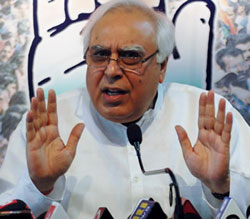 India’s Human Resource Development Minister Kapil Sibal has announced a new policy soon to attract more overseas students to the country’s premier educational institutions, the Indian Institutes of Technology (IIT). Kapli presented the idea at at a conference on higher education/technical education in New Delhi on 24 July 2009. It was the first meeting of the IIT Council, as it is called, discussing a multi-pronged policy, including introducing scholarships and reducing of fee, to attract more foreign students at post-graduate level in the institutes. The council also decided on allowing the prestigious IITs to create extra seats for foreign students at post graduate level to ensure that youths from other countries take part in research and development in a big way. At present, foreign students have to pay a much higher amount of money than their Indian counterparts as fee. The number of foreign students are very less in the IITs, mainly because of the high fees. More information in an article from The Hindu. India’s Human Resource Development Minister Kapil Sibal has announced a new policy soon to attract more overseas students to the country’s premier educational institutions, the Indian Institutes of Technology (IIT). Kapli presented the idea at at a conference on higher education/technical education in New Delhi on 24 July 2009. It was the first meeting of the IIT Council, as it is called, discussing a multi-pronged policy, including introducing scholarships and reducing of fee, to attract more foreign students at post-graduate level in the institutes. The council also decided on allowing the prestigious IITs to create extra seats for foreign students at post graduate level to ensure that youths from other countries take part in research and development in a big way. At present, foreign students have to pay a much higher amount of money than their Indian counterparts as fee. The number of foreign students are very less in the IITs, mainly because of the high fees. More information in an article from The Hindu. 
As the Indian government prepares to allow entry of foreign education providers in the higher education sector, about 50 foreign universities – mostly from the US, UK and Australia – have expressed interest in setting up campuses in the country. The universities have approached the Ministry of Human Resource Development during the summer of 2009. The Foreign Education Providers Bill, a proposed legislation to allow entry of foreign universities in India, is yet to be approved by Parliament. The proposed Bill has been holding fire after being cleared by the Union Cabinet in February 2007. Read a report by Pallavi Singh for LiveMint & The Wall Street Journal, 20 September 2009. 
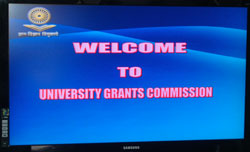 In August 2008, a committee set up by the Indian University Grants Commission (UGC) recommended an additional establishment of 735
universities in India during the ongoing 11th five-year Plan ending 2012. The committee, comprising Professor Duraisami of Madras University and Professor
Sudhansu Bhusan of National University of Education Planning and Administration,
said that more universities will be needed to increase the gross enrolment rate.
The committee was set up to suggest reforms on the affiliation system
and monitoring of education in the 11th plan, and followed upon recommendations made by the Indian National Knowledge
Commission in 2006 which stated that India would need at least 1,500 universities in order to
turn the country into being a knowledge society (more information about the 2006 commission report). In August 2008, a committee set up by the Indian University Grants Commission (UGC) recommended an additional establishment of 735
universities in India during the ongoing 11th five-year Plan ending 2012. The committee, comprising Professor Duraisami of Madras University and Professor
Sudhansu Bhusan of National University of Education Planning and Administration,
said that more universities will be needed to increase the gross enrolment rate.
The committee was set up to suggest reforms on the affiliation system
and monitoring of education in the 11th plan, and followed upon recommendations made by the Indian National Knowledge
Commission in 2006 which stated that India would need at least 1,500 universities in order to
turn the country into being a knowledge society (more information about the 2006 commission report).
Among the Indian universities it has however turned out be some fake ones. On 18 January 2009, the UGC presented a list of 22 fake universities in nine different states, with the majority being in Delhi and Uttar Pradesh. As fake institutions are not created through legislation, many of them could be registered as societies under the Societies Registration Act with the object of running educational programmes and conferring degrees. But according to Indian law, only those universities that have been established under an Act of Parliament or state legislature or granted a deemed university status under Section 3 of the UGC Act are entitled to call themselves universities and confer degrees.
More information in an article from ExpressIndia.com.
In an article titled ”The real classical languages debate”. Sheldon Pollock, Professor of Sanskrit and Indian Studies at Columbia University in New York, USA, regrets the current neglect of Indian classical language study and literary scholarship in India. Prof. Pollock reminds that India has shown itself capable of achieving pre-eminence in anything it sets its mind to, and mentions research institutions like IISc, the IITs, and IIMs, and now asks why India should not be able to commit itself to build the same kind of institute to serve the needs of its culture. ”Why should it not build an Indian Institute of the Humanities devoted not just to revivifying the study of the classical languages, but to producing world-class scholarship, as a demonstration of what is possible, a model for universities to follow, and a source of new scholars to staff those universities?”.
Read Sheldon Pollock’s article in the Hindu 27 November 2008.
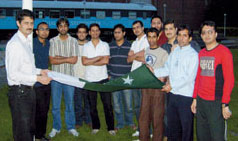 Despite the high cost of living and the language barrier, Sweden has become an attractive option for Pakistani students. Saad Rahman, representative of the Pakistani Students Association Linköping, has written an article titled ”A New Destination” for the Pakistani magazine Newsline in its May 2008 issue. The article highlights the fact that in the aftermath of 9/11, Pakistani students have made European countries a new favourite destintion. Initially, among the Scandinavian countries, Denmark, which then offered free education to foreign students, was the first choice of many students. But after Denmark started charging foreign students in 2006, many turned towards Sweden, which also offers free education to both, local and foreign students. Since then, Sweden has become one of the more popular destinations among Pakistani students. According to the statistics, about 1,177 Pakistani students were granted visas to Sweden for the academic year 2006-07. Despite the high cost of living and the language barrier, Sweden has become an attractive option for Pakistani students. Saad Rahman, representative of the Pakistani Students Association Linköping, has written an article titled ”A New Destination” for the Pakistani magazine Newsline in its May 2008 issue. The article highlights the fact that in the aftermath of 9/11, Pakistani students have made European countries a new favourite destintion. Initially, among the Scandinavian countries, Denmark, which then offered free education to foreign students, was the first choice of many students. But after Denmark started charging foreign students in 2006, many turned towards Sweden, which also offers free education to both, local and foreign students. Since then, Sweden has become one of the more popular destinations among Pakistani students. According to the statistics, about 1,177 Pakistani students were granted visas to Sweden for the academic year 2006-07.
Read Saad Rahman’s article.
In a new report released on 17 April 2008, the World Bank calls for a reevaluation of education policies in the context of a dramatic increase in private schools for primary education in Pakistan. Between 2000 and 2005, the number of private schools increased from 32,000 to 47,000, and by the end of 2005, one-third of enrolled children at the primary level was studying in a private school. While overall enrollments increased by 10 percent between 2001 and 2005, the report says quality of education is lagging. Children in private schools score significantly higher than those in government schools, even when they are from the same village. In fact, it will take children in government schools 1.5 - 2.5 years of ad! ditional schooling to catch up to where private school children are in Class 3.
Access the full World Bank report.
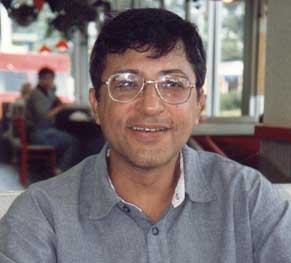 Prof. Pervez Hoodbhoy, chairman of the Dept. of Physics at Quaid-e-Azam University in Islamabad, Pakistan, has again published an article full of criticism against the Pakistani government’s talk about successes in science and research. In the article, ”Pakistan's Universities: Problems and Solutions”, published 28 January 2008, Prof. Hoodbhoy claims that the standard of Pakistani students is miserable, and that the ongoing scheme to set up nine Pak-European universities in the country (incluidng the KTH University in Sialkot) is turning into a stunning disaster. He also points out which reforms, in his view, that ought to be carried out to really improve the Pakistani universities. Prof. Pervez Hoodbhoy, chairman of the Dept. of Physics at Quaid-e-Azam University in Islamabad, Pakistan, has again published an article full of criticism against the Pakistani government’s talk about successes in science and research. In the article, ”Pakistan's Universities: Problems and Solutions”, published 28 January 2008, Prof. Hoodbhoy claims that the standard of Pakistani students is miserable, and that the ongoing scheme to set up nine Pak-European universities in the country (incluidng the KTH University in Sialkot) is turning into a stunning disaster. He also points out which reforms, in his view, that ought to be carried out to really improve the Pakistani universities.
Read the article.
 |
Indian embassies abroad actively promote India as an education hub. In a move to target at marketing India as a lucrative destination for higher studies, the University Grants Commission’s PIHEAD (Promotion of Indian Higher Education Abroad) committee currently discusses with the Ministry of External Affairs and Home Affairs to provide Indian embassies with professionals called ‘Education Attachés’. They will give information about Indian universities and courses to foreign students who wish to pursue higher studies in India.
Though the UGC does not have proper statistics on how many students come to study in India, the number is estimated to be around 20,000 at present, but the number is estimated to increase to 50,000 students in the next two years. Pune and Bangalore are said to be favourite destinations for international students.
Read an article by Kalpana Pathak in Business Standard, Mumbai, 28 November 2007.
 Pakistan's
ambitious US$4.3 billion project to create nine Pakistani-European
engineering universities with 50 per cent of the faculty
and administrators from Europe (the KTH university
in Sialkot being one of them, more
information) is an example
of how not to proceed, according to Prof. Pervez Hoodbhoy.
In an article titled ”World-class
universities: a new holy grail”, published by
SciDev.Net on 6 June 2007, Prof, Hoodbhoy says that the official
opening of the first of these universities, in collaboration
with a French consortium, is scheduled for October this year.
But the situation on the ground is dismal. Because of Pakistan's
dangerous security situation, the French are absent from
the university — as
of March 2007 not a single French faculty member had joined.
But even if the Europeans come, there are not enough Pakistani
staff to teach at these universities. And given the crisis
in science education in Pakistan, there are simply not enough
well-prepared students to take advantage of the high-level
university instruction. Pakistan's
ambitious US$4.3 billion project to create nine Pakistani-European
engineering universities with 50 per cent of the faculty
and administrators from Europe (the KTH university
in Sialkot being one of them, more
information) is an example
of how not to proceed, according to Prof. Pervez Hoodbhoy.
In an article titled ”World-class
universities: a new holy grail”, published by
SciDev.Net on 6 June 2007, Prof, Hoodbhoy says that the official
opening of the first of these universities, in collaboration
with a French consortium, is scheduled for October this year.
But the situation on the ground is dismal. Because of Pakistan's
dangerous security situation, the French are absent from
the university — as
of March 2007 not a single French faculty member had joined.
But even if the Europeans come, there are not enough Pakistani
staff to teach at these universities. And given the crisis
in science education in Pakistan, there are simply not enough
well-prepared students to take advantage of the high-level
university instruction.
Read
the full article.
|
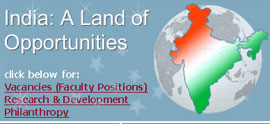 As part of its strategy to entice talent into higher education and research, the Indian government is targeting top-level people of Indian origin working in the West and making it easier for them find out about job opportunities in the country. With huge expansion in the number of young people in higher education projected for the next few years and some 48% to 52% of academic and research posts vacant across publicly-funded state and central universities, the need for academic talent has become pressing. As part of its strategy to entice talent into higher education and research, the Indian government is targeting top-level people of Indian origin working in the West and making it easier for them find out about job opportunities in the country. With huge expansion in the number of young people in higher education projected for the next few years and some 48% to 52% of academic and research posts vacant across publicly-funded state and central universities, the need for academic talent has become pressing.
Hosted by India's Education Ministry a new website is being launched which will provide updates about vacancies in faculty positions across all of India's higher education institutions. Go for the new website.
The website will also provide information about reforms in higher education and keep academics and researchers of Indian origin posted about important policies and legislation such as the Foreign Education Providers Bill currently being considered by parliament, to allow in more overseas private institutions. If that bill is passed this year, some are predicting an influx of foreign institutions that may entice academic talent from public universities, exacerbating the current shortage. Indian academics working abroad, commonly known as Non-Resident Indians or NRIs and overseas-born Persons of Indian Origin, PIOs, can register and become part of India's global human resources, an education ministry official said. Read more in an article written by
Alya Mishra, entitled ”New efforts to attract global academic talent” (posted in University World News 15 May 2011). 
Webometrics Ranking of World Universities (WR) is an Internet based ranking produced by the Cybermetrics Lab, a unit of the National Research Council (CSIC) in Spain. Its ranking is based on a combined indicator that takes into account both the volume of the Web contents and the visibility and impact of this web publications according to the number of external inlinks (sitations) they receive.
The ranking is updated every six months, providing Web indicators for universities and research centres worldwide. Besides a World Ranking of 18 000 higher education institutions worldwide (with Harvard, Massachusetts Institute of Technology, Stanford and University of California Berkeley as the top four). Full information about the 2010 Ranking. 
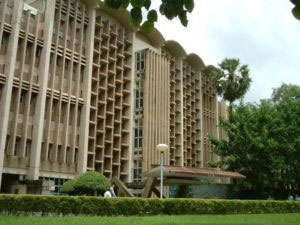 Cybermetrics Lab also offers a Regional South Asian Ranking list with the 100 top universities in the subcontinent. The three universities in top of the list for 2010 are the Indian Institute of Technology (IIT) in Mumbai (No. 461 on the World Ranking, photo)), the Indian Institute of Science (IISc) in Bangalore (565), and the Indian Institutes of Technology (IIT) in Kanpur (681). Cybermetrics Lab also offers a Regional South Asian Ranking list with the 100 top universities in the subcontinent. The three universities in top of the list for 2010 are the Indian Institute of Technology (IIT) in Mumbai (No. 461 on the World Ranking, photo)), the Indian Institute of Science (IISc) in Bangalore (565), and the Indian Institutes of Technology (IIT) in Kanpur (681).
The top university in Pakistan is considered to be Lahore University of Management Sciences (No. 2,078 on the World Ranking); in Sri Lanka
University of Moratuwa (2,610); in Bangladesh the Bangladesh University of Engineering and Technology (3,044); and in Nepal Kathmandu University (5,251). Go for the Regional Ranking list of Indian subcontinent universities (as a pdf-file).
In Sweden the Webometrics Ranking puts The Royal Institute of Technology (KTH) – No. 103 on the World Ranking, Uppsala University (107), and Linköping University (117) as the three in top.
The Web indicators used are based and correlated with traditional scientometric and bibliometric indicators and the goal of the project is to convince academic and political communities of the importance of the web publication not only for dissemination of the academic knowledge but for measuring scientific activities, performance and impact too. The ranking system follows the Berlin Principles on Ranking of Higher Education Institutions (more information), set up by the International Ranking Expert Group (IREG) founded in 2004 by the UNESCO European Centre for Higher Education (UNESCO-CEPES) in Bucharest and the Institute for Higher Education Policy in Washington, DC.
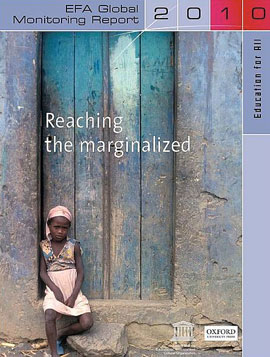 The aftershock of the global financial crisis threatens to deprive millions of children in the world’s poorest countries of an education, the 2010 Education for All Global Monitoring Report, entitled ”Reaching the marginalized”, warns. With 72 million children still out of school, a combination of slower economic growth, rising poverty and budget pressures could erode the gains of the past decade. The aftershock of the global financial crisis threatens to deprive millions of children in the world’s poorest countries of an education, the 2010 Education for All Global Monitoring Report, entitled ”Reaching the marginalized”, warns. With 72 million children still out of school, a combination of slower economic growth, rising poverty and budget pressures could erode the gains of the past decade.
The Global Monitoring Report, developed annually by an independent team and published by UNESCO, assesses global progress towards the six Education for All goals to which over 160 countries committed themselves in 2000. The 2010 Report, Reaching the marginalized, charts some spectacular advances in education over the past decade, a striking contrast with the “lost decade” of the 1990s. Since 1999, the number of children not attending school has fallen by 33 million — and more children are completing a full cycle of primary education.
In South and West Asia, the number of children out of school has been more than halved, partly through policies aimed at getting more girls into school. In India, the number of children not in school fell by almost 15 million in just two years, from 2001 to 2003.
However, according to the report, South Asia will not reach the literacy rate set for 2015, stating that “projections indicate that the adult illiteracy rate will have fallen by 29 per cent”, rather than the intended 50 per cent reduction goal. Absolute deprivation in education remains at extraordinarily high levels throughout South Asia, despite the progress of the past decade. A new data set on education marginalization reveals that factors leading to marginalization do not operate in isolation: wealth and gender intersect with language, ethnicity, region and rural-urban differences to create mutually reinforcing disadvantages.
• In India, a child spends over seven years in school on average. Wealthy urban boys and girls average more than eleven years in school, compared with less than six for poor rural boys and just three for poor rural girls. Girls from poor households living in the state of Bihar are further disadvantaged, and receive less than 2 years of education on average.
• Policies to combat marginalization are making a difference: A stipend programme in Bangladesh is helping keep girls in school. A new law in India now legally requires states to provide free education to children aged 6 to 14.
National education finance
• The share of GNP decreased in India (from 4.5% to 3.2%). Overall, the share of public spending on education ranged from 2.4% to 3.8% in Bangladesh, India, Nepal and Pakistan, well below the developing country median (4.5%).
More information, with link to full report. 
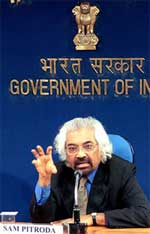 The Indian National Knowledge
Commission is a a high-level advisory body to the Prime
Minister of India, with the objective of transforming
India into a knowledge society (more
information about the National Knowledge Commission).
In an official letter, dated 29 November 2006, its Chairman
Sam Pitroda (photo to the right) asks the Prime Minister
to work for the establishment of 50 National Universities
all over India in order to provide education of the highest
standard. Pitroda also appeals for the creation of upto 1,500
new universities in the country, enabling India to attain
a gross enrolment ratio of at least 15 per cent by 2015.
A change of the system of regulation for higher education
is also required, according to the letter, and an increase
in public spending and diversification of sources of financing. The Indian National Knowledge
Commission is a a high-level advisory body to the Prime
Minister of India, with the objective of transforming
India into a knowledge society (more
information about the National Knowledge Commission).
In an official letter, dated 29 November 2006, its Chairman
Sam Pitroda (photo to the right) asks the Prime Minister
to work for the establishment of 50 National Universities
all over India in order to provide education of the highest
standard. Pitroda also appeals for the creation of upto 1,500
new universities in the country, enabling India to attain
a gross enrolment ratio of at least 15 per cent by 2015.
A change of the system of regulation for higher education
is also required, according to the letter, and an increase
in public spending and diversification of sources of financing.
Reform of the existing universities and promotion of enhanced
quality are also pleaded for, and a thorough restructuring
of the undergraduate so-called affiliated colleges. Finally
Pitroda lists the need for ensuring access to university studies
for all deserving students, and affirmative action to ensure
that access to education for economically and historically
socially underprivileged students is enhanced in a substantially
more effective manner. Read
the full letter with recommendations from the National Knowledge
Commission (as a pdf-file)
Delhi to have first South
Asian university. The Indian
Prime Minister Manmohan Singh’s idea of
a South Asian University has started taking shape
with the seven SAARC members agreeing that it be housed in
India, preferably Delhi. If Delhi actually becomes the venue,
it would be among the few world capitals to boast of so many
universities, six to be precise. The proposed SAU would witness
free flow of students as well as faculty from Pakistan, Bangladesh,
Bhutan, Nepal, Sri Lanka, India and the Maldives. Sources
say it would take another two-three years before SAU becomes
a reality. The decision
to have SAU in India was taken at a meeting of university
regulatory bodies of Saarc countries. The
concept note was prepared by Guhar Rizvi, a Bangladeshi national,
of Harvard University. Read
more in Times of India .
In early 2007, the Higher Education Commission
(HEC) in Pakistan decided to set up a Plagiarism Detection
Cell in collaboration with the public sector universities of the country, HEC executive director Suhail H Naqvi says.
Plagiarism-detecting software would be provided to
the universities to compare the materials against international
literature. He said the universities should monitor all PhD
theses and research publications of their teachers. Read
more in Daily Times 27 march 2007.
During February 2007, the Indian
Express newspaper in New Delhi has published a series of
articles highlighting how foreign scholars are stranded –
their visas for India delayed, and many even asked to change
their subjects. The issue of approvals for foreign research
scholars has become a matter of concern in recent
years with cases of American Fulbright scholars waiting
for clearance for periods ranging from six to 21 months.
Among the proposals that were rejected were “Left
politics in Maharashtra” and “Muslim
women’s perceptions of their role”. In August
2006, when the scholars should already have been in India,
93 of the 100 Fulbright visa applications were pending. Eight
of these applications are still pending.
In an article published
15 February, the paper now reports that the Indian government
is planning a green channel for categories of research and
institutions that can be approved without going through the
harrowing process of clearance. But there will still be a
red channel that will basically be defined by the scholar’s
nationality, the home institution, the participating institution
in India and, significantly, the nature of research.
The Swedish
Organisation for Individual Relief,
SOIR (IM in Swedish), based in Lund, is
a development assistance organisation started in 1938.
The organisation supports education, health and income-generating
projects in many countries throughout the world, including
India (especially among Tibetan refugees) and Nepal.
In Nepal, SOIR since 40 years runs a school in the village
Wahaki in Parbat, a remote district of western Nepal. From
February 2007 this school has been expanded with new buildings,
and within two years it will turn into a community college, that
will have an academic collaboration with two Swedish folk
high schools, Österlen folk high school in Tomelilla
and Helliden folk high school in Tidaholm. More
information about the project in a report by Janusz Lipinski,
SOIR Project Organiser (as a pdf-file, only in Swedish).
 Students
participating in Österlen
folk high school’s yearly undergraduate social science
courses on India/South Asia (more information) already
has the Wahaki college as their base for field studies/research
in Nepal. SOIR has also employed Mr. Keshab
Bhattarai (photo to the right)as the organisation’s
representative in Nepal, in charge of the Wahaki college and
other projects that SOIR is engaged with in the country. Mr.
Bhattarai has been affiliated to Lund University, where he completed a Masters degree in the Asian Studies programme
organised by the Centre
for East and South-East Asian Studies,
ACE, in 2007. Students
participating in Österlen
folk high school’s yearly undergraduate social science
courses on India/South Asia (more information) already
has the Wahaki college as their base for field studies/research
in Nepal. SOIR has also employed Mr. Keshab
Bhattarai (photo to the right)as the organisation’s
representative in Nepal, in charge of the Wahaki college and
other projects that SOIR is engaged with in the country. Mr.
Bhattarai has been affiliated to Lund University, where he completed a Masters degree in the Asian Studies programme
organised by the Centre
for East and South-East Asian Studies,
ACE, in 2007.
Number of varsities
not enough. India
will need 1,500 universities to attain a gross enrolment
ratio of at least 15 per cent by 2015. This is a key observation
made by the National
Knowledge Commission (NKC) in its note
to the Prime Minister on higher education. The
Hindu 2 January
2007. Go
for the article.
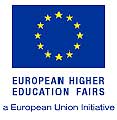 The
first two in a series of seven European Higher Education
Fairs (EHEF) in Asia, organised by Asia-Link, happened
in November 2006.
The first event was held in Bangkok from 10–12
November, followed by New Delhi from 24-26 November. For
more news on the 2007 and 2008 events, consult the EHEF website: http://www.ehefs.org The
first two in a series of seven European Higher Education
Fairs (EHEF) in Asia, organised by Asia-Link, happened
in November 2006.
The first event was held in Bangkok from 10–12
November, followed by New Delhi from 24-26 November. For
more news on the 2007 and 2008 events, consult the EHEF website: http://www.ehefs.org
Each
event started with a day-long Asia-Link Symposium, discussing
and reviewing EU higher education cooperation initiatives
and projects with Asia in general and the venue country in
particular. The Asia-Link Symposium focused on the theme "Academic
cooperation and student mobility between India and Europe",
setting the platform for high level international dialogue
between high ranking Indian and European officials and relevant
stakeholders. The discussions were on sharing experiences
on the relevance of the Bologna Process to India, on strengthening
the India-EU academic/institutional collaboration including
Joint Study Programmes. More
information.
In order to secure a proper
Indian visa foreign visitors to academic conferences in India
must submit a letter from the Swedish University giving
his/her credentials and a letter of invitation from the conference
organizers/university in India. Similarly Swedish
students visiting India for academic purposes should submit
similar letters from the Swedish and Indian Universities involved.
If a group of students are travelling together to India, they
must apply together and send their applications, passports
etc. to the Embassy in one bunch.
In either of the above cases, it would be incorrect to apply
for a tourist visa, as it is against the regulations of the
Government of India to use a tourist visa for any other purpose. More
information including application forms are available at the
web site of the Indian Embassy in Stockholm.
On 11 July 2005 the Government
of India announced more liberal rules for granting student
visas. There will be no bar or restriction on
the number of courses a foreign student may pursue and
each time the periodicity of the visa will be counted
afresh. The student will also be permitted to take multiple
courses in one institution or multiple institutions,
provided the institutions are recognised and reputed. More
information.
Every year, approximately 19
million students are enrolled in high schools and 10 million
students in pre-graduate degree courses across India.
Moreover, 2.1 million graduates and 0.3 million post-graduates
pass out of India's non-engineering colleges. While 2.5-3
percent of them find jobs in other fields or pursue further
studies abroad, the rest opt for employment in the IT industry.
If the flow from high schools to graduate courses increases
even marginally, there will be a massive increase in the number
of skilled workers available to the industry. Even at current
rates, there will approximately be 17 million people available
to the IT industry by 2008. |
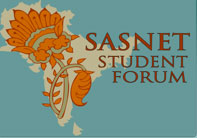
 Srilankan University students’ unions have voiced concerns over the government’s move to introduce a compulsory ‘leadership training programme’ under the military to all new entrants from 2011. The Inter University Students’ Federation (IUSF) says there were doubts over the government’s move, as military leadership skills could not be applied to civil society.
Srilankan University students’ unions have voiced concerns over the government’s move to introduce a compulsory ‘leadership training programme’ under the military to all new entrants from 2011. The Inter University Students’ Federation (IUSF) says there were doubts over the government’s move, as military leadership skills could not be applied to civil society. India’s 2011 budget hikes spending on higher education with 24% compared to last year to US$2.9 billion for 2011-12. The new budget was presented by Finance Minister Pranab Mukherjee on 28 February 2011. Most of the increased allocation is for projects already in the pipeline rather than for ambitious plans to expand the number of higher education institutions in the coming years. A major portion of the money for higher education will go to the 15 Indian Institutes of Technology (IITs), which will receive $1.25 billion, followed by the University Grants Commission, the regulatory body for higher education, which will receive $1.16 billion.
India’s 2011 budget hikes spending on higher education with 24% compared to last year to US$2.9 billion for 2011-12. The new budget was presented by Finance Minister Pranab Mukherjee on 28 February 2011. Most of the increased allocation is for projects already in the pipeline rather than for ambitious plans to expand the number of higher education institutions in the coming years. A major portion of the money for higher education will go to the 15 Indian Institutes of Technology (IITs), which will receive $1.25 billion, followed by the University Grants Commission, the regulatory body for higher education, which will receive $1.16 billion. Four new regional higher education networks are to be set up in Central and South Asia. That is a result of a Regional Policy Dialogue conference jointly organised by Pakistan’s Higher Education Commission (
Four new regional higher education networks are to be set up in Central and South Asia. That is a result of a Regional Policy Dialogue conference jointly organised by Pakistan’s Higher Education Commission ( Decades after India sought foreign assistance to establish its first premier technical institutes - the Indian Institutes of Technology or IITs – it is again seeking guidance from the world's top institutions to set up 14 innovation universities.The government wants mentors from leading universities in the US and UK. They include the Massachusetts Institute of Technology, Harvard, Yale and George Washington universities, and Imperial College, London.
Decades after India sought foreign assistance to establish its first premier technical institutes - the Indian Institutes of Technology or IITs – it is again seeking guidance from the world's top institutions to set up 14 innovation universities.The government wants mentors from leading universities in the US and UK. They include the Massachusetts Institute of Technology, Harvard, Yale and George Washington universities, and Imperial College, London.  A new AREU (
A new AREU (
 In August 2008, a committee set up by the
In August 2008, a committee set up by the  Despite the high cost of living and the language barrier, Sweden has become an attractive option for Pakistani students. Saad Rahman, representative of the
Despite the high cost of living and the language barrier, Sweden has become an attractive option for Pakistani students. Saad Rahman, representative of the  Prof. Pervez Hoodbhoy, chairman of the Dept. of Physics at Quaid-e-Azam University in Islamabad, Pakistan, has again published an article full of criticism against the Pakistani government’s talk about successes in science and research. In the article, ”Pakistan's Universities: Problems and Solutions”, published 28 January 2008, Prof. Hoodbhoy claims that the standard of Pakistani students is miserable, and that the ongoing scheme to set up nine Pak-European universities in the country (incluidng the KTH University in Sialkot) is turning into a stunning disaster. He also points out which reforms, in his view, that ought to be carried out to really improve the Pakistani universities.
Prof. Pervez Hoodbhoy, chairman of the Dept. of Physics at Quaid-e-Azam University in Islamabad, Pakistan, has again published an article full of criticism against the Pakistani government’s talk about successes in science and research. In the article, ”Pakistan's Universities: Problems and Solutions”, published 28 January 2008, Prof. Hoodbhoy claims that the standard of Pakistani students is miserable, and that the ongoing scheme to set up nine Pak-European universities in the country (incluidng the KTH University in Sialkot) is turning into a stunning disaster. He also points out which reforms, in his view, that ought to be carried out to really improve the Pakistani universities. 
 Pakistan's
ambitious US$4.3 billion project to create nine Pakistani-European
engineering universities with 50 per cent of the faculty
and administrators from Europe (the KTH university
in Sialkot being one of them,
Pakistan's
ambitious US$4.3 billion project to create nine Pakistani-European
engineering universities with 50 per cent of the faculty
and administrators from Europe (the KTH university
in Sialkot being one of them,  As part of its strategy to entice talent into higher education and research, the Indian government is targeting top-level people of Indian origin working in the West and making it easier for them find out about job opportunities in the country. With huge expansion in the number of young people in higher education projected for the next few years and some 48% to 52% of academic and research posts vacant across publicly-funded state and central universities, the need for academic talent has become pressing.
As part of its strategy to entice talent into higher education and research, the Indian government is targeting top-level people of Indian origin working in the West and making it easier for them find out about job opportunities in the country. With huge expansion in the number of young people in higher education projected for the next few years and some 48% to 52% of academic and research posts vacant across publicly-funded state and central universities, the need for academic talent has become pressing.  Cybermetrics Lab also offers a Regional South Asian Ranking list with the 100 top universities in the subcontinent. The three universities in top of the list for 2010 are the Indian Institute of Technology (IIT) in Mumbai (No. 461 on the World Ranking, photo)), the Indian Institute of Science (IISc) in Bangalore (565), and the Indian Institutes of Technology (IIT) in Kanpur (681).
Cybermetrics Lab also offers a Regional South Asian Ranking list with the 100 top universities in the subcontinent. The three universities in top of the list for 2010 are the Indian Institute of Technology (IIT) in Mumbai (No. 461 on the World Ranking, photo)), the Indian Institute of Science (IISc) in Bangalore (565), and the Indian Institutes of Technology (IIT) in Kanpur (681).  The aftershock of the global financial crisis threatens to deprive millions of children in the world’s poorest countries of an education, the 2010 Education for All Global Monitoring Report, entitled ”Reaching the marginalized”, warns. With 72 million children still out of school, a combination of slower economic growth, rising poverty and budget pressures could erode the gains of the past decade.
The aftershock of the global financial crisis threatens to deprive millions of children in the world’s poorest countries of an education, the 2010 Education for All Global Monitoring Report, entitled ”Reaching the marginalized”, warns. With 72 million children still out of school, a combination of slower economic growth, rising poverty and budget pressures could erode the gains of the past decade.
 Students
participating in Österlen
folk high school’s yearly undergraduate social science
courses on India/South Asia (
Students
participating in Österlen
folk high school’s yearly undergraduate social science
courses on India/South Asia ( The
first two in a series of seven European Higher Education
Fairs (EHEF) in Asia, organised by Asia-Link, happened
in November 2006.
The first event was held in Bangkok from 10–12
November, followed by New Delhi from 24-26 November. For
more news on the 2007 and 2008 events, consult the EHEF website:
The
first two in a series of seven European Higher Education
Fairs (EHEF) in Asia, organised by Asia-Link, happened
in November 2006.
The first event was held in Bangkok from 10–12
November, followed by New Delhi from 24-26 November. For
more news on the 2007 and 2008 events, consult the EHEF website: 